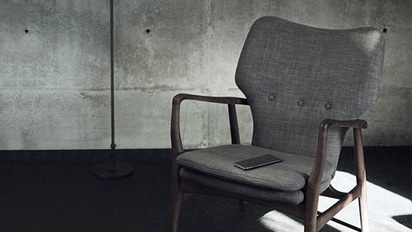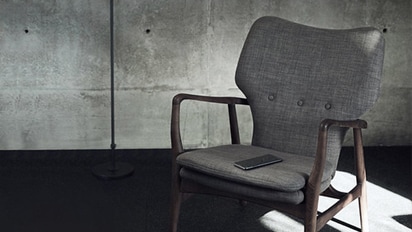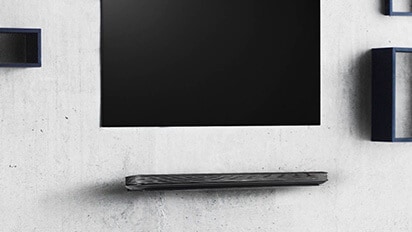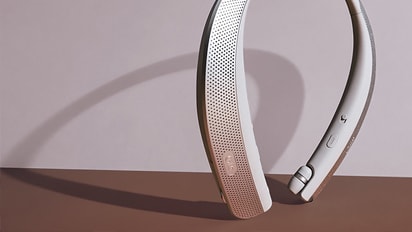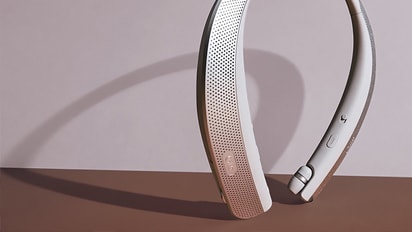Select your type of air conditioner from the list below for the most appropriate installation tips:
NOTE: Refer to your owner's manual for important safety information before attempting to install your air conditioner unit. Please visit our Manuals and Documents page to download a copy.
Watch this video to learn about Window Air Conditioner Installation.
Window AC units are specifically designed to be installed in a window. The owner's manual included with your model will provide you with the specific requirements the window should have, such as the size and type of construction.
-
20 inches space.
There should be at least 20 inches of open space behind the unit, so that the heat may discharge properly. Restriction of outside air flow will greatly reduce the cooling efficiency of the air conditioner.
-
Perfect location.
Consider the location of the window you'll use. A window unit installed near a corner of the room may seem to run louder than in another location, because of the sound reflected by the nearby wall.
-
Security bracket.
Be sure to install the security bracket (also called the window locking bracket). The security bracket keeps the window securely closed against the AC's cabinet and won't allow someone from the outside to raise the window.
-
Air flow blockage.
Avoid having curtains that will be pulled into to the air conditioner's front grille. The blockage in air flow will reduce the cooling efficiency of the unit and can lead to frost accumulating on the coils.
-
Tilt backwards.
When the AC is installed, keep in mind that the unit should have a tilt towards the back (1/4 - 1/2"). If the back of the unit isn't installed slightly lower than the front the unit can leak condensed water from the front grille.
-
Drain plug.
The drain plug does not have to be installed in all cases. The air conditioner is designed to operate with about 1/2" of water in the base pan. This water is picked up and slung onto the condenser by the slinger fan to help discharge heat. This helps to improve cooling efficiency. In humid conditions it may be necessary, or preferred, to remove the plug to allow excess water to drain out.
NOTE: Refer to your owner's manual for important safety information before attempting to install your air conditioner unit. Please visit our Manuals and Documents page to download a copy.
-
20 inches space.
There should be at least 20 inches of open space behind the unit, so that the heat may discharge properly. Restriction of outside air flow will greatly reduce the cooling efficiency of the air conditioner.
-
Perfect location
Consider the location of the window you'll use. A window unit installed near a corner of the room may seem to run louder than in another location, because of the sound reflected by the nearby wall.
-
Tilt the unit.
When the AC is installed, keep in mind that the unit should have a tilt toward the back (1/4 - 1/2"). If the back of the unit isn't installed slightly lower than the front the unit can leak condensed water from the front grille.
-
Sleeve and rear grille.
If you use an existing wall sleeve, you should measure its dimensions. Install the new air conditioner according to the included installation instructions to achieve the best performance. All wall sleeves used to mount the new air conditioner must be in good structural condition and have a rear grille to securely attach the new air conditioner.
If a new sleeve is needed you can find more information below:
NOTE: Refer to your owner's manual for important safety information before attempting to install your air conditioner unit. Please visit our Manuals and Documents page to download a copy.
Watch this video to learn about Portable Air Conditioner Installation.
Portable air conditioners are designed to be used in just about any location of your home. The units can be rolled almost anywhere and used as long as there is a window within approximately 5 ft that the exhaust hose can be connected to. Below are a few other guidelines that will help you get the most out of your new machine.
-
5 feet space.
The vent hose will extend approximately 5 ft. from the rear of the portable unit. You do not have to try to cover or damp the outside exhaust opening. The force of the air being expelled throughout the vent hose will keep insects out of the vent system.
-
Drain Hose.
If it is very humid in your area, "P2" or "FL" may display on your machine's control panel. This simply means that the drain pan at the bottom of the unit needs to be emptied. During less humid conditions, the unit should run without requiring regular draining because most of the condensed moisture will be evaporated as it is blown across the condenser coils.
-
Fan Speed.
The fan speed setting can also be lowered and temperature setting can be raised slightly if the unit is displaying "P2" or "FL" too frequently during very humid weather conditions.
-
Perfect location.
When choosing an install location, try to place the unit in an open area. If the unit is too close to nearby walls cold air from the unit can be deflected back toward the unit causing it to cycle on and off rapidly.

Sanmi is a Home Appliance expert and author of this help library article. Please leave him feedback below about the page.








